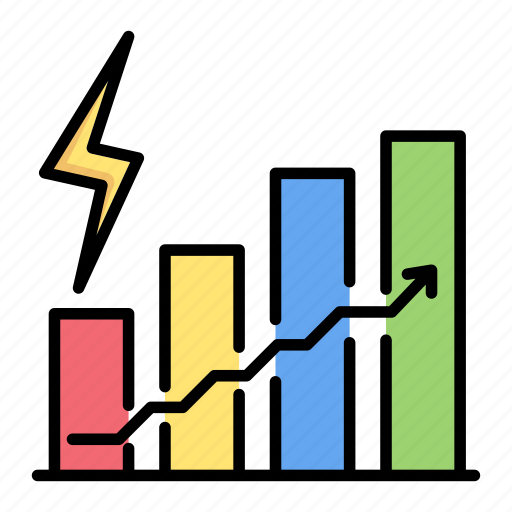
How do we appear positioned at present to meet emissions reduction targets established by the Paris Agreement? In context, considering energy, a main contributor to emissions, topics of relevance:
- Current global demand for energy
- Projections for future demand
- Contours of an Energy transition
- Energy mix between fossil fuels and renewables
- View forward: uncertain business models, public sector support.
A concise rendering of current information regarding these topics, in the discussion below.
Global Warming Trajectories across Emissions Scenarios
 The desired goal of limiting global warming to A 1.5°C increase by 2100 compared to pre-industrial levels is fast receding as a possibility.
The desired goal of limiting global warming to A 1.5°C increase by 2100 compared to pre-industrial levels is fast receding as a possibility.
In a positive scenario, of adherence to NetZero commitments made in COP26 by 64 countries representing 89% of global emissions, additional commitments aspired to, and technology improvements expected per current trends, we will end up with a 1.7°C increase instead.
And the trajectory of renewable energy cost decline with current policies leads to a dismal 2.4°C future, well above the upper limit of 2.0°C in the Paris Agreement.
The Role of Energy in Global Emissions
The global energy system that drives our economies and maintains our standards of living is a key factor in all considerations of emissions reduction. A 1.5°C scenario may be possible still, with a greatly accelerated transformation of the Energy sector. From the current state of fossil fuels use, there will need to be greater efficiency and a move towards electrification and new fuels – faster and more extensively than predicated by the present commitments made by governments and corporations.
Demand for Energy
 According to the International Energy Agency (IEA), global CO2 emissions from energy combustion and industrial processes in 2021 increased by 6% over 2020, in a very close correlation with the economic output (GDP) increase of 5.9%, to an all-time high of 36.3 gigatonnes (Gt).
According to the International Energy Agency (IEA), global CO2 emissions from energy combustion and industrial processes in 2021 increased by 6% over 2020, in a very close correlation with the economic output (GDP) increase of 5.9%, to an all-time high of 36.3 gigatonnes (Gt).
A tonne is a metric ton, 1000 kilograms (kgs) or 2,205 pounds (lbs). A ‘ton’ can be short (907.2 kgs, equaling 2,000 lbs.), or long (1,016.05 kgs, equaling 2,240 lbs.)
A gigatonne is a billion tonnes. That’s 2.2 trillion pounds. For context: NASA informs us this is the weight of 10,000 fully-loaded U.S. aircraft carriers; the Washington Post tells us this is well over what 100 million African elephants would weigh.
Electricity and heat production accounted for 46% of the increase, with coal, at an all-time high of 15.3 Gt, constituting over 40% of the CO2 emissions growth.
The global increase in electricity and heat sector emissions can almost all be attributed to China, the only major economy experiencing growth in both 2020 and 2021. Electricity demand in China still increased by 10% in 2021 over 2020, outpacing the commensurate economic growth of 8.4%. Just this year-on-year increase was equivalent to the total demand for the entire African continent.
Record high prices for natural gas along with lower operating costs for coal plants across the US and much of Europe also brought about a greater reliance on coal for power generation in 2021.
Energy consumption variations
There is wide variance in energy consumption between regions and countries. In 2020 Iceland came in at a per capita demand of around 167,000 kWhrs, the US at 74,000, albeit with a population 1,000 times larger.
The world average was around 20,000 kWhrs. China came in at 28,000, the EU at around 35,000.
The equivalent figure for Somalia, last derived in 2019, is 236 – no zeroes to go with that.
Emissions per capita
Converting CO2 emissions into a per capita basis for an equivalent comparison, China is registered at 8.4 tonnes, the US 14 tonnes, EU 6 tonnes. Somalia is at 0.04 tonnes.
Energy Transition
 With national economic engines dependent mostly on fossil fuels, an energy transition (from fossil fuels to green) that supports development and growth imperatives is not yet convincingly feasible financially, though efficiencies and cost reductions are demonstrably taking effect and are expected to improve returns on investment in green energy over time. McKinsey expects that returns on decarbonization technologies and power could outpace the growth in investment by 2035.
With national economic engines dependent mostly on fossil fuels, an energy transition (from fossil fuels to green) that supports development and growth imperatives is not yet convincingly feasible financially, though efficiencies and cost reductions are demonstrably taking effect and are expected to improve returns on investment in green energy over time. McKinsey expects that returns on decarbonization technologies and power could outpace the growth in investment by 2035.
The 20% contribution of electricity to the total energy mix now is projected to increase to 40% by 2050. Hydrogen is expected to develop as the new fuel.
The two factors of electrification and new fuels such as Hydrogen should cause a reduction of 40% in fossil fuel use by 2050, compared with 2020.
Between 2010 and 2019, the Energy Intensity of the global economy – energy required for GDP increase – has decreased by 2% per year, an indicator of increasing efficiency in output generation. However, for clean energy transition, the average rate required through 2050 is 3%.
And for the production of the energy itself, carbon emissions per unit of energy – Carbon Intensity – have decreased, at a rate of 0.3% per year over the same period, indicating a shift towards green energy. Paris agreement imperatives for Carbon Intensity decrease, however, are rates of 3.5% per year in a 2°C scenario and 7.7% in a 1.5°C scenario.
Demand for energy will continue to increase but at a lower rate, despite an increase of 2 billion in the world population and rapid, exponential growth in the global economy by 2100.
Continuing reductions in the energy intensity of production and greater efficiency in industry, buildings and transport will be the offsetting factors.
Fossil Fuels in the Energy Mix

In any warming scenario within the range stipulated by the Paris Agreement, there may now be no new unabated fossil fuel projects, and existing powerplants and refineries will need to be wound down sooner than the currently determined lifespans that attracted initial investment.
Abatement technologies such as Carbon Capture Use and Storage (CCUS, also abbreviated CCS) have not received the required priority and investment over past decades to have been developed to a point of feasibility at present.
Per the Intergovernmental Panel for Climate Change (IPCC), If investments in coal and other fossil infrastructure continue, energy systems will be locked-in to higher emissions, making it harder to limit warming to 2°C or 1.5°C. Many aspects of the energy system – physical infrastructure; institutions, laws, and regulations; and behavior – are resistant to change or take many years to change.’
Limiting warming to 2°C or 1.5°C will also cause stranded fossil-related assets, including fossil infrastructure and unburned fossil fuel resources. The economic impacts of stranded assets could amount to trillions of dollars.
Coal assets are most vulnerable over the coming decade; oil and gas assets are more vulnerable toward mid-century. Coal demand has already peaked, while oil demand will peak in the next two to five years. Gas demand is expected to continue through about 2035.
CCS could allow fossil fuels to be used longer, reducing potential stranded assets.
Fossil fuel emissions abatement
In all its scenarios that there will be residual emissions by 2050 that will require abatement either through chemical processes like CCUS or through ecological methods like reforestation and ecosystem restoration.
Chemical processes are prohibitively expensive currently (for a ton of Carbon, around $600), with no clear indication of their commercial feasibility under present conditions despite hope for exponential advancement. Ecological solutions appear low-hanging fruit but pose their own challenges, such as reduction of agricultural land and the need for maintenance of trees, which can themselves become the source of carbon emissions in the case of forest fires in conditions of extreme drought.
Quick View Forward: Business Models in a Decarbonized Economy
There will be uncertainty across economic sectors. Besides massive investment and public demand side management through catalyzation and incentives, respectively, governments will have to join business and society for the use of policy to affect adjustments in market design.
© Haseeb Ahmed, The Stanwork Group

Watch YouTube Short
Optimize Your On-site Balancing with the Balanset-1A
For industries that rely on rotating machinery such as fans, crushers, and turbines, achieving optimal rotor balance is crucial for efficient operation and longevity. The Balanset-1A from Vibromera is an advanced on-site balancing solution that simplifies the process, ensuring precision and reliability.
Comprehensive Kit for On-site Balancing
The Balanset-1A is a two-channel device designed for accurate balancing and vibration analysis. Its complete kit includes everything you need for on-site balancing:
Two vibration sensors
One phase angle sensor (laser tachometer)
Balanset measurement block
Magnetic stand
Electronic scales
Transport case
Software on a flash drive
Priced at 1751 euros, the Balanset-1A offers a cost-effective solution for industries worldwide.
Streamlined Rotor Balancing Process
The Balanset-1A facilitates a streamlined rotor balancing process divided into several key stages:
Equipment Setup
Begin by setting up the vibration sensors perpendicularly to the rotor’s axis of rotation. Mount the laser tachometer on the magnetic stand, aiming it at a reflective tape on the pulley. Connect the sensors to the Balanset device and the device to a laptop via USB, then launch the Balanset software, selecting the two-plane balancing mode.
Initial Vibration Measurement
To start, weigh the test weight, recording its mass and installation radius. Initiate the rotor and measure the initial vibration levels to determine the amplitude and phase of the existing imbalance.
Balancing in the First Plane
Install the test weight on the first balancing plane, corresponding to the location of the first sensor. Run the rotor to assess vibration levels. A change in amplitude or phase by at least 20% indicates partial imbalance correction.
Balancing in the Second Plane
Relocate the test weight to the second plane (where the second sensor is placed), and rerun the rotor for measurement. This data enables the software to calculate the precise position and weight of corrective loads.
Imbalance Correction
Based on the collected data, the Balanset software will suggest corrective weights and their installation angles for both planes. Remove the test weight, prepare the corrective weights as per the software’s recommendations, and install them at the calculated angle in the rotor’s rotation direction from the test weight’s original position.
Final Check and Completion
Run the rotor for a final balance check. If the vibration level is reduced to an acceptable range, the balancing process is complete. If further correction is necessary, the software provides guidance on additional weight placement.
Advanced Features for Detailed Analysis
The Balanset-1A excels not just in balancing but also in comprehensive vibration analysis. It offers features like:
Accurate rotational speed measurement using the tachometer
Precise phase angle determination for vibration signals
FFT spectrum for a detailed frequency view
Polar graph for visualizing unbalance
ISO 1940 tolerance calculator
Data logging and report generation
With capabilities for single and two-plane balancing, as well as grinding wheel balancing, the Balanset-1A is a versatile tool for various industrial applications.
Conclusion
The Balanset-1A empowers industries to perform precise on-site balancing, enhancing operational efficiency and machinery lifespan. Its comprehensive features and user-friendly interface make it an indispensable tool for any maintenance team focused on reducing vibration and optimizing performance.
Contact Information:
For more information about our Balanset balancing devices and other products, please visit our website: https://vibromera.eu.
Subscribe to our YouTube channel, where you will find instructional videos and examples of completed work: https://www.youtube.com/@vibromera.
Stay updated with our latest news and promotions on Instagram, where we also showcase examples of our work: https://www.instagram.com/vibromera_ou/.
Buy Balanset-1A on Facebook Marketplace
Balanset-1A OEM on eBay
Your comment is awaiting moderation.